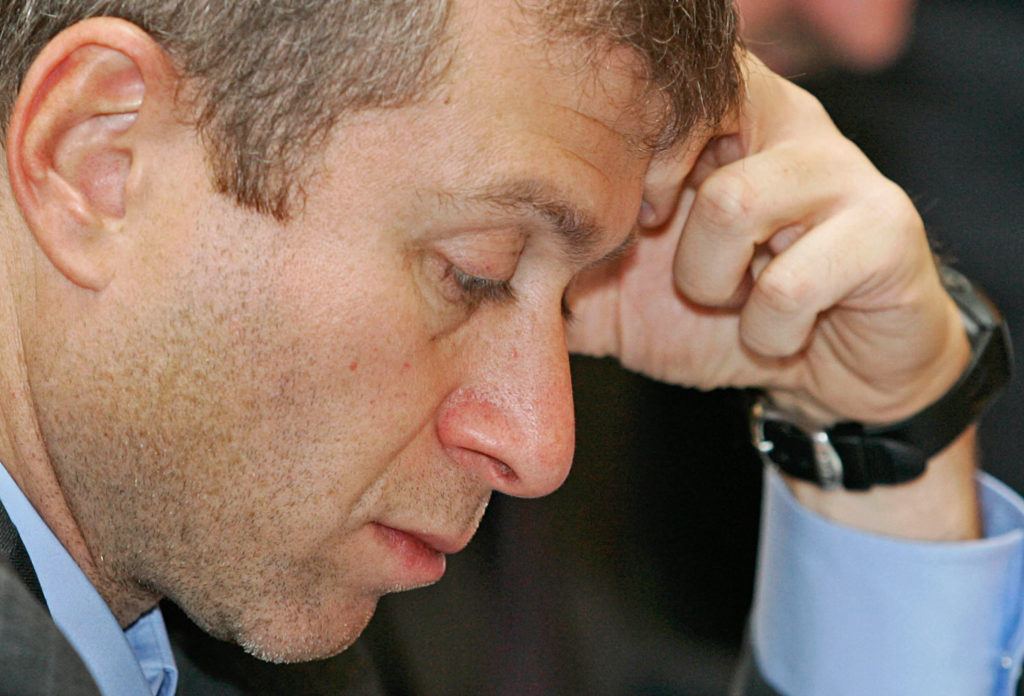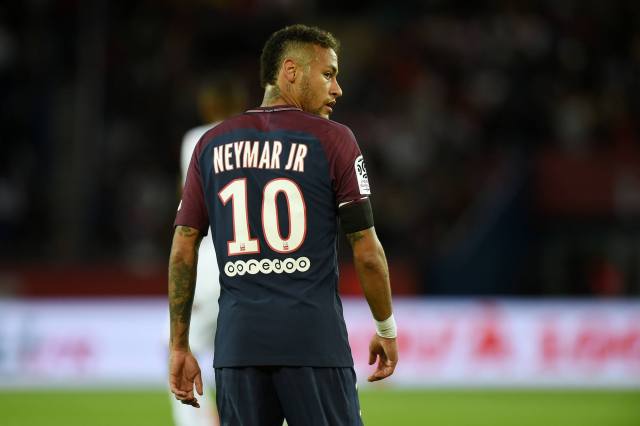
In football, everything is worth something. And if it can be sold, and someone somewhere is willing to pony up, it’ll happen before long. When the new Premier League season kicked off earlier this month, 11 of the 20 clubs showcased a new money-spinning wheeze: the sleeve sponsor. Following a rule change by the League, England’s top teams can for the first time display the name and logo of a corporate backer on their shirt’s left arm, up to a size of 100 square centimetres.
Manchester City’s players now sport the logo of South Korea’s Nexen Tire on their sinistral biceps, while Chelsea’s display that of Alliance Tyres, a brand recently acquired by their main shirt sponsor, Japan’s Yokohama Rubber Company. In the beautiful game, at least, the wheels of hyper-capitalism continue to spin freely.
Leicester, whose owner is Thai, have signed with Siam Commercial Bank. Liverpool, whose main sponsor is Standard Chartered, now trot on to the pitch wearing the additional logo of Western Union, a deal said to be worth £25 million over five years.
Olly Dale, Liverpool’s commercial director, explains that the fit with Western Union is about more than the basic fee (after all, what’s £5 million a year in the gazillionarium that is elite football?):
“Western Union is headquartered in the US [and] also a really well recognised brand across Asia, and those are the two marketplaces in the world that are of the greatest interest to us in terms of how we develop as a football club.”

The exponential monetisation of the world’s most popular sport is boggling to observe. From a logo on an arm to a teasingly intimate seat at the Etihad stadium: Manchester City this week unveiled their ‘Tunnel Club’, which, for prices between £299 for a single game or £15,000 for a whole season, deep-pocketed spectators are granted access to the tunnel that goes from the dressing room to the pitch. Behind a pane of two-way glass, these lucky few sit in a comfortable lounge with a bar and table service and watch the players and managers as they make their final pre-match preparations and return to the dressing room following the final whistle. As the New York Times’ Rory Smith writes, this premium experience gives the participant “a glimpse behind the curtain… in soccer, the tunnel, like the dressing room, has always qualified as sacred space, the exclusive preserve of players and coaches”. Another boundary fallen – how long, one wonders, till the final bastion, the dressing room itself, is breached? Well, how much are you willing to pay?
Innovations like these, coupled with super-rich owners, staggering levels of investment and fast-growing global markets are producing transfer fees that are not just record-breaking but record-shattering. According to Deloitte, spending by Premier League sides during this summer’s window has reached £1.17 billion, breaking the record set last summer. And there is still a week of business to be done.
The move of the sublimely gifted Neymar (pictured at the top of this article) from Barcelona to Paris Saint-Germain (PSG) took the kind of sums being offered for and to players, which already seemed detached from any rational economic analysis, to an extraordinary new level. The £198 million paid by the French club’s Qatari owners was more than double the previous highest fee, which was only a year ago. It looks like PSG will follow up by recruiting Kylian Mbappe from rivals Monaco at a cost of around £140 million. The latter agreement, in a way, would be the real shocker. At 25, Brazil’s Neymar is generally regarded as one of the top three players in the world alongside Lionel Messi and Cristiano Ronaldo. Mbappe, though clearly blessed with a prodigious talent, is only 18 and to a large extent untested.
Such untamed volatility has rarely ended well in other industries and at the turn of the decade, in an attempt to establish some order, Uefa, the European game’s governing body, introduced the Financial Fair Play (FFP) regulations. These are intended to keep the relationship between revenue and spending at sustainable levels. But the vastness of the Neymar deal appears to mock FFP rules, or circumnavigate them via blatant financial trickery. Spanish media claim the footballer is being paid around £200 million to be an ‘ambassador’ for Qatar’s World Cup in 2022, which allowed him to personally pay the release clause in his Barcelona contract and keep that astronomical sum off PSG’s books.
There is, understandably, much griping about the state of the game – dodgy owners and agents, obscene remuneration, players with no moral compass. Russian oligarchs, Arab oil tycoons, American wheeler-dealers and Eastern parvenus have seized control of football’s commanding heights. There is an industry of hard-eyed middle-men whose sole purpose is to bid everyone up, carving out a healthy slice of the dosh for themselves in the process. The relationship the humble fan once had with his club, the players, and the game itself, has morphed into something that can only be less intimate and more transactional. The passion is still there on a Saturday afternoon, of course, the hardcore still travel up and down the motorways on wet midweek evenings to unglamorous away destinations, but the guys on the pitch and in the dugout now belong to a separate caste – super-wealthy globetrotters who show little loyalty to anything beyond their bank balance.
The days of 1955, when Newcastle won their third FA Cup and the bonus was a job lot of tissue-stuffed handbags bought by the club for the players’ wives at a cost of £17, are long gone (“Everyone was howking away inside the bags,” Jackie Milburn recalled, but “there wasn’t a bloody thing in any of them.”) Today’s clubs are business behemoths with global reach and ambition. Backhanders and bribes have, according to media scoops, determined big decisions – even at Fifa – which is supposed to set the rules and police the scene. TV companies pay billions for the right to screen matches. For that ordinary fan, there’s an awful lot of self-deception and pretending required, a lot of forgiveness asked for, a lot of cynicism to be buried.

The journey to this giddying point is entertainingly mapped out by Richard T Kelly in Keegan and Dalglish, a new joint biography of the two legends.
As Kelly points out, Keegan, the son of a miner, was in many ways the forerunner of the modern, financially driven, self-interested, entrepreneur-footballer: “the exemplar of a player who always knew what he was worth, and not only where he was from but where he wished to get to.” In 1978, Keegan made £250,000, only half of which came from playing football. “The rest was media work, endorsements and promotion, putting his name and face to a great range of comestibles, some of them quality products, some pure tat.” He endorsed products including Pirelli slippers, a Lyons Maid ice lolly, and a transistor radio, and released a pop single that somehow made it into the Top 30. In his own words, Keegan saw himself as “the bridge between that innocent era of Bobby Charlton, Bobby Moore… and whatever [football] is now.” Whatever football is now…
From the days when both men started out as promising young players to the point where as grizzled veterans they surrendered the reins of management for the last time, the trajectory of the game only ever went in one direction: bigger, richer, more, more, more. Poking around in this history suggests the glittering, if heavily tarnished, planetary colossus that is today’s game was really only ever the inevitable outcome. And there’s clearly a way to run yet…
There’s another shoulder, for a start.
***
> A YouGov/UnHerd transatlantic survey of public attitudes to who deserved their wealth… and who did not… found that in the UK, in particular, top sports stars were largely seen as “undeserving”.










Join the discussion
Join like minded readers that support our journalism by becoming a paid subscriber
To join the discussion in the comments, become a paid subscriber.
Join like minded readers that support our journalism, read unlimited articles and enjoy other subscriber-only benefits.
Subscribe